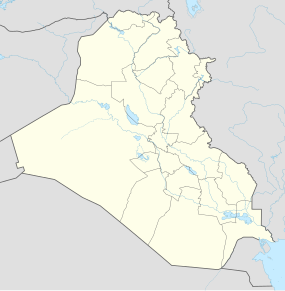Ancient Babylon
| بابل | |

A partial view of the ruins of Babylon from Saddam Hussein's Summer Palace
|
|
| Alternate name |
Akkadian: Babylon ( Akkadian: Bābili or Babilim; Aramaic: בבל, Babel, Hebrew: בָּבֶל, Bavel, Arabic: بابل, Bābil) was a major city of ancient Mesopotamia in the fertile plain between the Tigris and Euphrates rivers. The city was built upon the Euphrates and divided in equal parts along its left and right banks, with steep embankments to contain the river's seasonal floods. Babylon was originally a small Semitic Akkadian city dating from the period of the Akkadian Empire c. 2300 BC. The town attained independence as part of a small city-state with the rise of the First Amorite Babylonian Dynasty in 1894 BC. Claiming to be the successor of the more ancient Sumero-Akkadian city of Eridu, Babylon eclipsed Nippur as the "holy city" of Mesopotamia around the time Amorite king Hammurabi created the first short lived Babylonian Empire in the 18th century BC. Babylon grew and South Mesopotamia came to be known as Babylonia. The empire quickly dissolved after Hammurabi's death and Babylon spent long periods under Assyrian, Kassite and Elamite domination. After being destroyed and then rebuilt by the Assyrians, Babylon became the capital of the Neo-Babylonian Empire from 609 to 539 BC. The Hanging Gardens of Babylon was one of the Seven Wonders of the Ancient World. After the fall of the Neo-Babylonian Empire, the city came under the rule of the Achaemenid, Seleucid, Parthian, Roman, and Sassanid empires. ... Wikipedia
...
|
|---|---|

